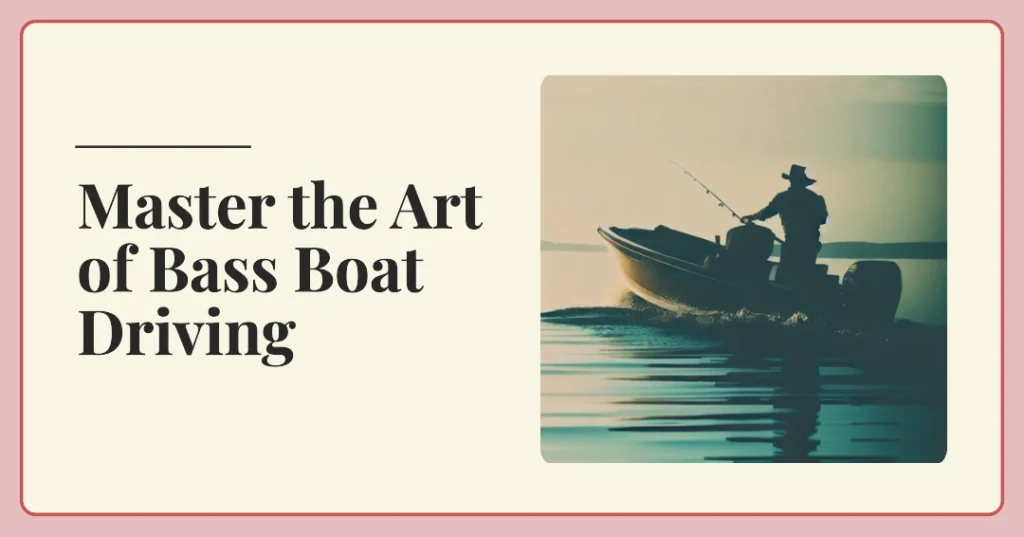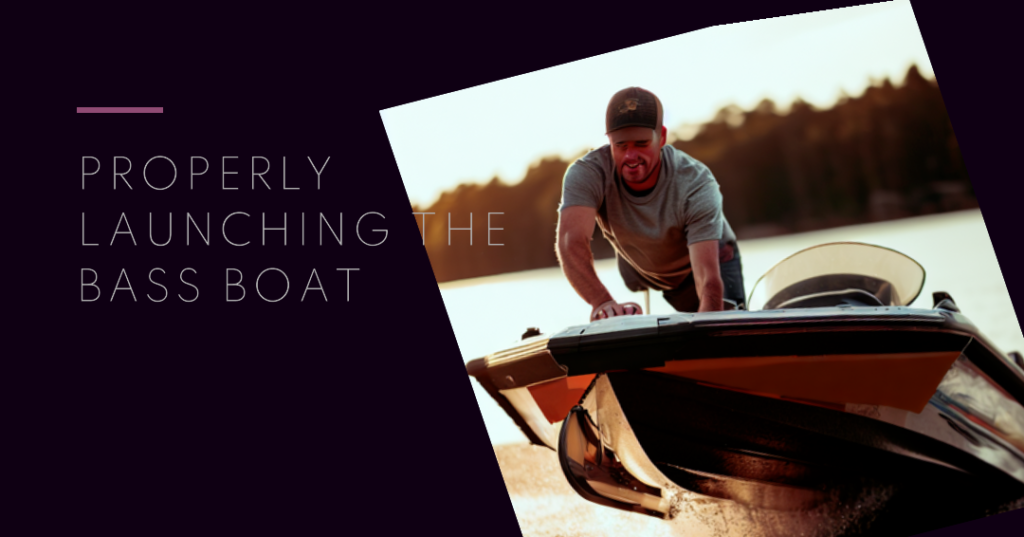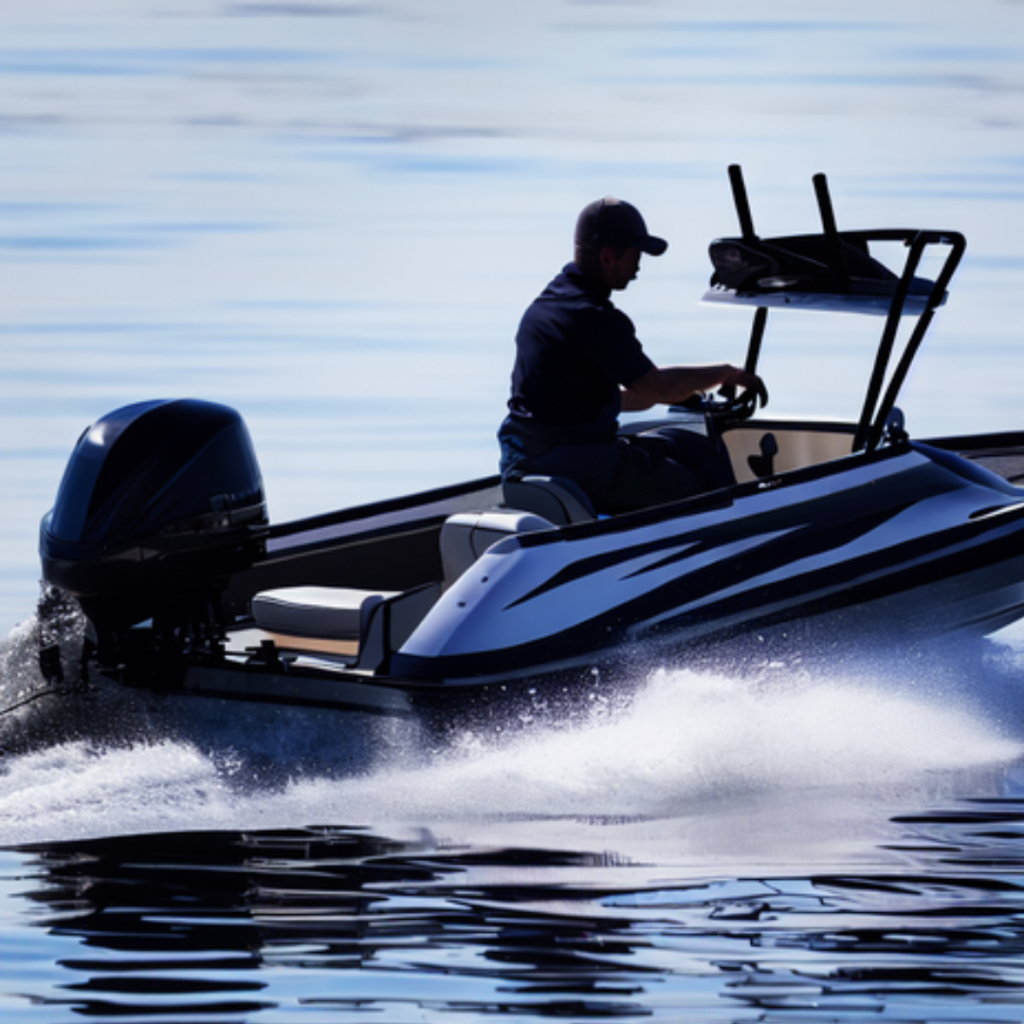To drive a bass boat, you need to have knowledge of operating the boat, understanding water conditions, and using the necessary equipment for navigation and fishing.
In this guide, I will explore the steps involved in driving a bass boat, including launching, maneuvering, and docking the boat, as well as techniques for navigating shallow waters and fishing effectively.
So, let’s dive in and learn the essential skills needed to become a proficient bass boat driver.

Table of Contents
How to Drive a Bass Boat like pro?
Driving a bass boat can be a thrilling experience. However, it requires knowledge and practice to ensure a smooth and safe ride. These steps aims to equip you with the necessary skills to drive a bass boat with confidence.
Launching the Boat:

Start your journey by properly launching the bass boat. Slowly back the trailer into the water. Once the boat is in the water, ensure your vehicle is parked and the parking brake is engaged.
Start the boat’s motor, release the winch hook from the trailer, and slowly back away from the trailer, always being mindful of your surroundings.
Trimming the Motor:
Before you hit the throttle, trim the motor all the way down. When you’re ready to move, give the boat some gas to get on the plane. Once the boat is planing, you can adjust the trim as needed to manage your speed and handling.
Understanding Trimming:
Trimming refers to adjusting the angle of the motor to control the boat’s speed and handling. Trimming up makes the boat go faster, while trimming down will slow it down. Trimming also allows you to adjust the boat’s attitude, or the angle at which it rides on the water.
Steering:
If your bass boat is smaller (with a motor under 20 horsepower), steer with the tiller handle. For larger boats, use the steering wheel.
Maintain Awareness:
Boating requires constant attention to your surroundings. Keep an eye out for other boats, kayakers, non-motorized vessels, and potential obstacles such as trees or floating debris.
Practice Safe Boating:
Safety should always be your top priority. Always wear a properly fitting U.S. Coast Guard-approved life jacket, use an engine cutoff device, and never boat under the influence of drugs or alcohol.
Handling Rough Water:
It’s crucial to know how to manage your boat in rough water. Learn how to navigate through boat wakes and execute turns safely.
Anchoring and Docking:
Make sure you know the right procedures for anchoring and docking. Your boat should be secured properly, and you should approach the dock at a 20- to 30-degree angle to compensate for wind.
Education:
Consider taking a boating safety course to enhance your knowledge and skills. A course can teach you more about steering, speed, gear shifting, and how different hull types can affect your boat’s handling.
Tips For Driving A Bass Boat

Here are some unique tips for driving a bass boat, including a few stats for a deeper understanding:
- Customize Your Understanding: Each bass boat is unique, just like its operator. As of 2023, bass boats range from 16 to 25 feet, powered by engines from 25 to 300 horsepower. Familiarize yourself with the specific dynamics of your boat, and adjust your handling accordingly.
- Prioritize Safety Measures: In 2019, the U.S. Coast Guard reported that 86% of drowning victims from recreational boating accidents were not wearing a life jacket. Make sure you and your passengers always wear U.S. Coast Guard-approved life jackets, regardless of how calm the water might seem.
- Stay Attentive: Maintaining 360-degree awareness of your surroundings is crucial when operating any watercraft. Keep a keen eye out for floating debris, submerged obstacles, other vessels, and swimmers. A reported 79% of boat collisions in 2019 were due to operator inattention or improper lookout.
- Master the Art of Trimming: Properly trimming your motor optimizes your boat’s performance and efficiency. By adjusting the propeller’s angle, you can decrease drag, increase speed, and provide a smoother ride. Some anglers even report up to a 10% improvement in fuel economy when the boat is properly trimmed.
- Practice, Practice, Practice: Practice makes perfect, especially when it comes to complex maneuvers like docking and anchoring. A National Marine Manufacturers Association (NMMA) report suggested that operator inexperience was responsible for about 46% of all boating accidents.
- Wave Wisdom: Understanding how to handle boat wakes can be the difference between a comfortable ride and a potential accident. A 45-degree angle approach at a moderate speed is considered safe wave navigation practice.
- Say No to Alcohol: Operating under the influence is a leading contributor to fatal boating accidents. In 2019, alcohol was the primary contributing factor in 23% of boating deaths.
- Consistent Maintenance: Just like cars, boats need regular maintenance to operate safely and efficiently. According to BoatUS, about 44% of on-water breakdowns could be prevented with regular maintenance.
- Education is Key: The U.S. Coast Guard reported in 2019 that 70% of deaths occurred on boats where the operator had not received boating safety instruction. Consider taking a boating safety course to increase your knowledge and confidence.
These tips, coupled with an understanding of your unique boat and a focus on safety, can make your bass boat driving experience rewarding and enjoyable.
Proper Boat Handling
Proper boat handling is crucial when it comes to driving a bass boat. It ensures smooth and controlled steering, allowing you to maneuver around obstacles effortlessly.
By mastering boat handling techniques, you can maintain speed and stability, ensuring a safe and enjoyable experience on the water.
Whether you’re navigating through tight spaces or avoiding submerged structures, having the ability to steer your boat smoothly and accurately is essential. It’s important to understand the physics of steering a boat and practice techniques such as counter-steering to make precise turns.
Additionally, maintaining a consistent speed and stability is crucial for efficiency and comfort while operating a bass boat.
So, invest time in mastering the art of boat handling to enhance your overall boating experience.
Frequently Asked Questions:
How Do You Drive A Bass Boat?
To drive a bass boat, sit in the driver’s seat, start the engine, and familiarize yourself with the controls. Use the throttle lever to increase or decrease the speed, steer the boat using the steering wheel, and be mindful of any obstacles in the water.
Follow speed limits and navigation rules for a safe and enjoyable experience.
What Are Some Safety Tips For Driving A Bass Boat?
When driving a bass boat, always wear a life jacket, especially when the boat is in motion. Avoid distractions like texting or talking on the phone. Be aware of weather conditions and have an emergency plan in place. Check your boat’s equipment regularly and keep a proper distance from other vessels to prevent accidents.
How Should You Approach Docking A Bass Boat?
When docking a bass boat, approach the dock slowly and smoothly. Align the boat parallel to the dock and reduce your speed as you get closer. Use reverse gear and steer gently to position the boat correctly. Secure the boat with ropes and fenders, and be mindful of the wind and current while docking.
Conclusion
To sum it up, mastering the art of driving a bass boat requires a combination of knowledge, skill, and experience. By adhering to the guidelines outlined in this blog post, you can ensure a safe and enjoyable experience on the water.
Remember to always prioritize safety, maintain proper boat control, and familiarize yourself with the specific features and handling characteristics of your bass boat. Additionally, practicing maneuvering techniques such as docking, turning, and reversing will greatly enhance your driving abilities.
Don’t be afraid to seek out resources such as online tutorials, boating courses, or even experienced boaters who can provide valuable tips and advice.
